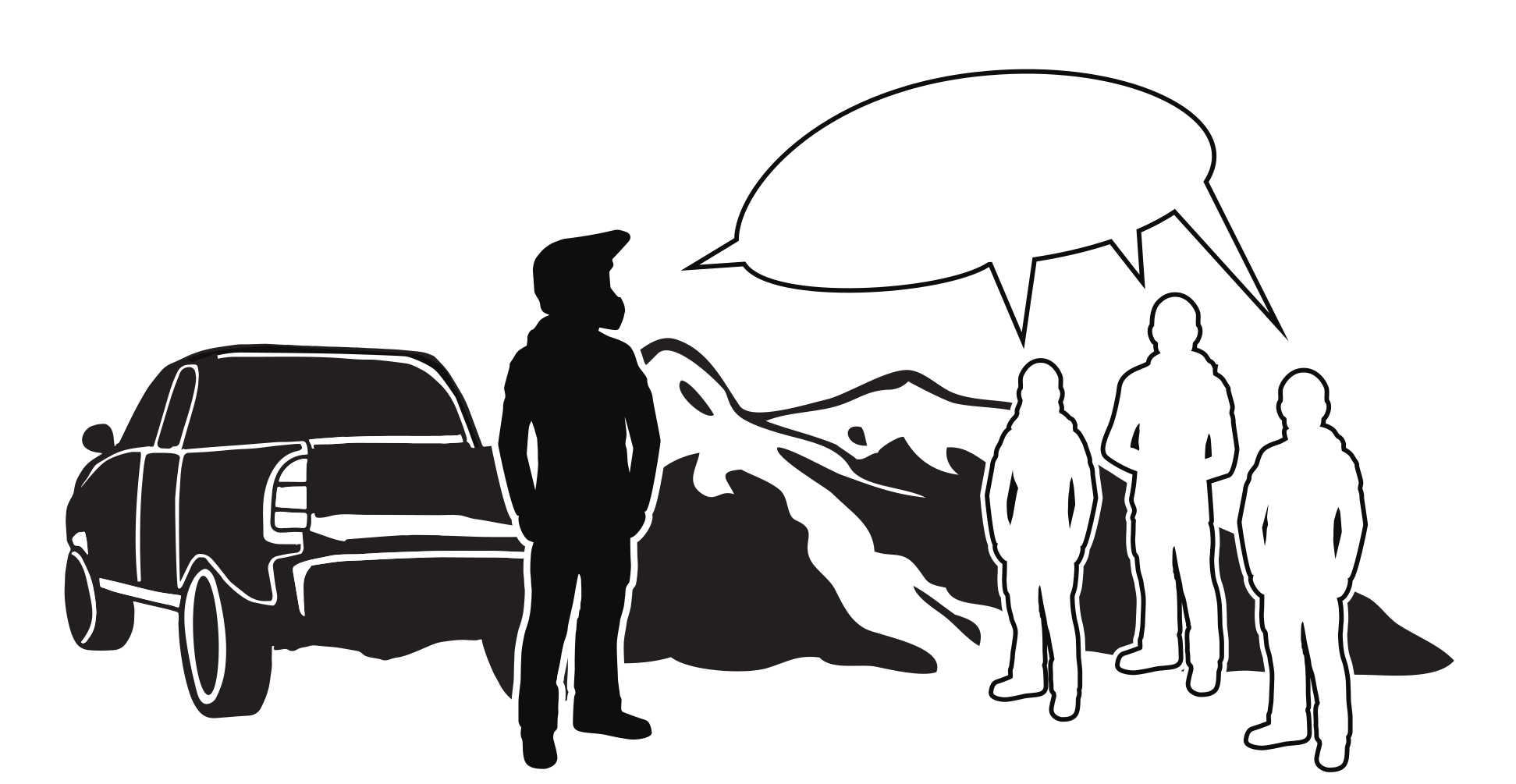

DEBRIEF
When you return to the trailhead, spend a few moments on a debrief. You probably already end the day by sharing stories about how the day went, and these casual conversations are great starting points for a debrief. To learn from each day, use this time to address the following:
- What worked and why
- What to do differently next time
- Summarize conditions
At the heart of the debrief is the question “did we do it right, or just get lucky?” The mountains rarely provide feedback, but the lack of feedback doesn’t mean you’re doing it right. And when the mountains do provide feedback, it’s often violent and unsurvivable. Use the debrief to learn and improve before the mountains teach you the hard way.
What Worked and Why
Discussing what worked is often the easy part; these are the moments that you already dwell on at the end of the day. Encourage this conversation, and guide it with the Daily Flow to give yourselves feedback for each step in the process. Many things contributed to your success, some more exciting and memorable than others, so reflecting step-by-step on the process can help capture the complete picture.
What to do Differently Next Time
If anything didn't go as planned, acknowledge it. What were your greatest sources of uncertainty, and where were you most exposed? Describe what you’d do differently next time, given the same partners and conditions. Considering the possible consequences of errors in avalanche terrain, it’s worth accepting responsibility and striving for improvement. Keep the conversation as constructive as possible. With practice, you and your partners should become comfortable with it.
If you had any close calls with avalanches, treat them as learning opportunities. If the close call was a serious one, you might dwell on it for a while. It can help to create a new plan that would prevent the close call under similar circumstances. Share your thoughts with your partners before your next day out with them.
Summarize Conditions
To wrap-up your debrief, facilitate a discussion summarizing the conditions you and your partners observed. This is a great way to prepare to submit observations to the local avalanche center and to promote continued learning among your partners. The Conditions Alerts checklist is a useful tool to structure this discussion. Because you already used this for similar purposes as you stopped to talk throughout the day, a final summary should be straightforward.
Discuss what you observed and where, focusing on trends as you moved through terrain and as weather and time acted on the conditions you observed. Did you correctly anticipate conditions? Acknowledge the uncertainty you had about conditions before you left, and discuss ways to reduce it in the future. Reach consensus on a few short sentences that could be used to communicate your observations with the local avalanche center.

















